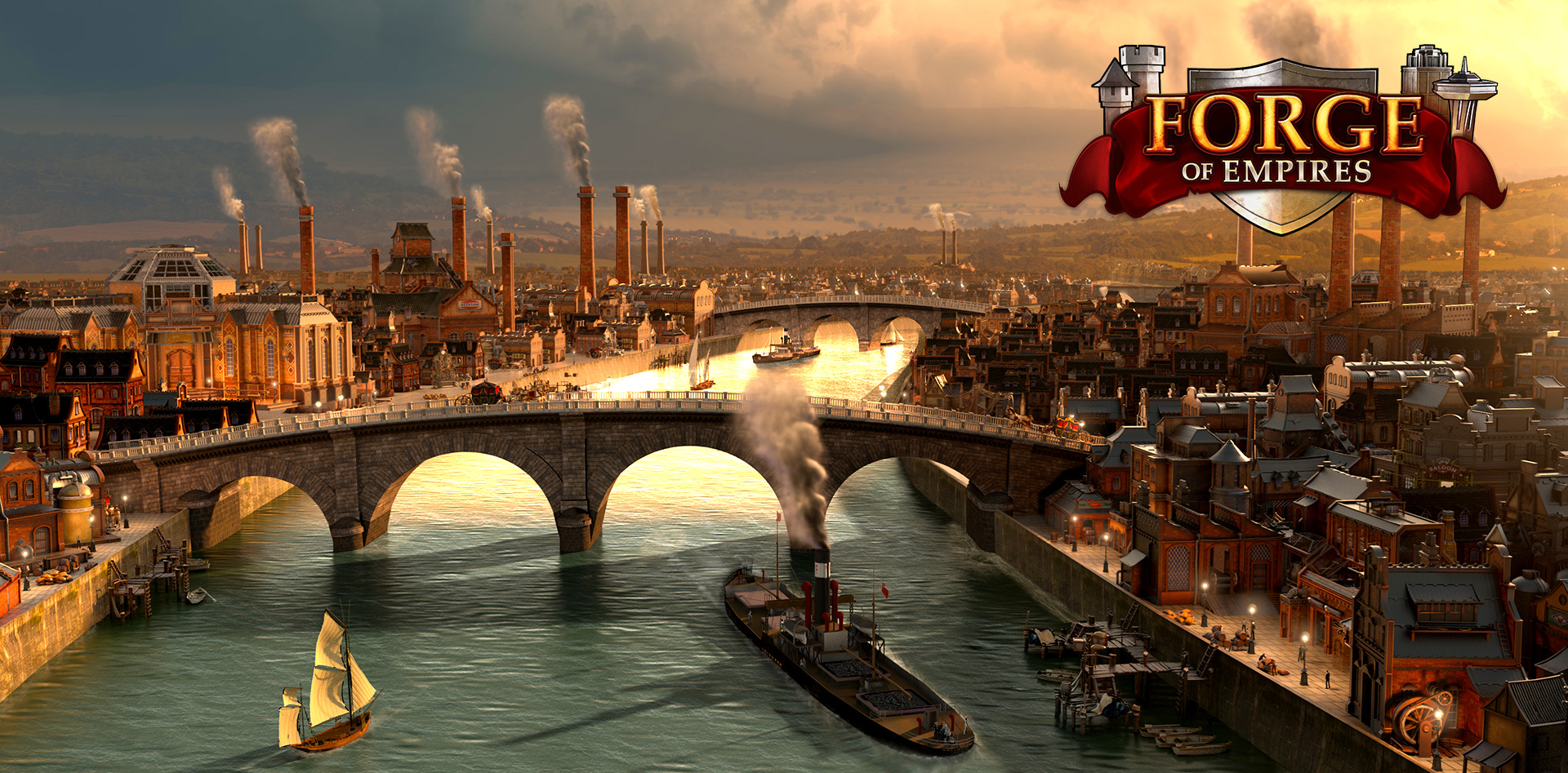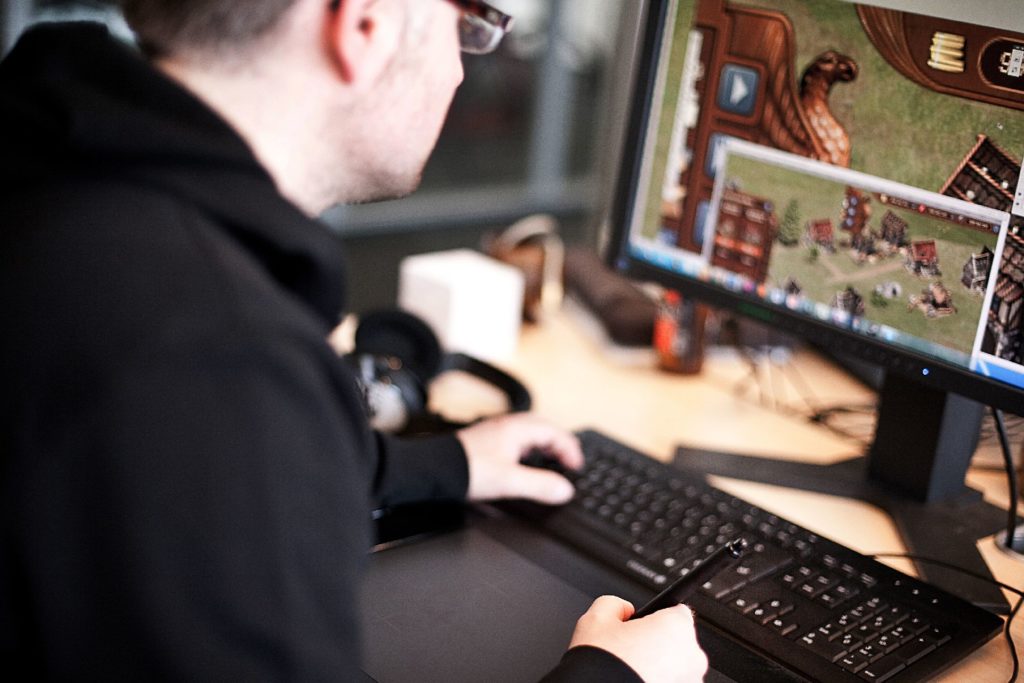InnoGames was founded by two brothers with their friend to create a game they wanted to play with their friends. Its first game, Tribal Wars, which released for browsers in 2003, grew so quickly that it prompted the trio to officially found InnoGames in 2007. The German company now has two studios, one in Hamburg and the other in Düsseldorf, with the latter dedicated to developing mobile games. Although InnoGames has released multiple browser and mobile games since its founding while still maintaining the Tribal Wars franchise, the company’s most successful game to date is Forge of Empires, which released in 2012 and now boasts over 50 million registered players with a lifetime revenue of EUR 250 million (about $283.4 million US). Last year, InnoGames brought in EUR 130 million ($147.4 million US), which is a 25 percent increase in revenue over the previous year.
Its success did not go unnoticed, and last year it became the first video game company to be acquired by the Nordic TV broadcaster Modern Times Group (MTG), which currently owns 51 percent of InnoGames’ shares. The timing coincides with the gaming company’s strategy to put increased focus on mobile gaming, but it hasn’t forgotten about its browser-based roots. Almost all of its games, including Forge of Empires, can be played cross-platform—meaning that users can switch between playing from their computers and mobile devices at any time. That said, the history-themed strategy game is seeing more mobile installations than ever, which may be spurred by its weekly content updates, promotions that include television commercials, and audience engagement through a web series called InnoGames TV.
Armin Busen, chief product officer at InnoGames, spoke with AListDaily about the company’s continued growth and how it engages with a global audience between two gaming platforms.

How would you say Forge of Empires compares to other mobile strategy games?
Forge of Empires stands out as a long-running successful game. It has a total of 5.8 billion game sessions and a total worldwide playtime of 136,984 years. Compared to its competitors, we continuously rank high across app stores and maintain our steady growth. We recently reached a lifetime revenue of EUR 250 million and celebrated our fifth anniversary. On top of that, we have had many past successes with the game, including winning Google’s “Best of Games 2015” and was named the “Best Browser Game 2013” at the German Computer Game Award (Deutscher Computerspielpreis).
Is there a lot of audience crossover when going from web-based browser games to mobile?
Next to browser, Forge of Empires is also available cross-platform for iOS and Android devices. This allows our players to play across platforms which extend their play time and increase their overall experience. Therefore, we see different levels of platform adoption across markets, with some markets preferring mobile over browser.
While we are strongly focusing on mobile, browser is and will continue to be important for our company. The revenue we see on browser combined with the number of players that are active on it is a clear sign the platform is still strong.
What is the key to discoverability when it comes to the mobile space and how does it compare to browser-based gaming?
Our strong marketing strategy plays a crucial role when it comes to discoverability. As a lot of marketers know, most of the media consumption has switched in the recent years to mobile. Yet, despite these trends, InnoGames has diversified its strategy to be able to reach potential players on every facet of the sales funnel.
Discoverability focused on browser-based gaming is normally based on game portals, while on mobile it is through the app stores. Since our games are cross-platform we have the greatest success through TV advertisement as it reaches all platforms. Our marketing department is also a forerunner in the field of social networks, with campaigns that have been used as case studies for Facebook. Overall, our approach to marketing is innovative, we try to test and gather as much information as we can while maintaining a high-quality approach.
How well would you say InnoGames’ television commercial marketing has worked?
At InnoGames, we mainly see TV campaigns as a complementary addition to our online ones, especially since our goal is to reach customers across platforms. Through our commercials, we capitalize on the growing number of individuals who use a tablet or smartphone as a second screen while watching shows.
Our marketing strategy allows us to use the best of both worlds: TV’s immense reach and the specialized targeted reach of online campaigns. Imagine you are browsing through your Facebook feed, and you see an ad telling you to play Forge of Empires. You later browse a website and see a banner, then later that night as you sit in your living room, you see an ad for the game. As you can see, combining TV and online campaigns allows us to increase the reach of awareness with our customers—with viewers seeing the same message across different platforms and experiences.
What led to the acquisition by MTG and what does it enable InnoGames to do with its games?
InnoGames’ position within the gaming industry combined with its strong yet continuous growth influenced MTG’s decision about the acquisition. Through this partnership, we aim to carry our titles to even larger audiences around the world by utilizing MTG’s international presence, their strong media network and their understanding of storytelling. MTG’s culture of empowering entrepreneurial spirit is exactly what we were looking for as we move into the next chapter of our story. The team could not be more excited about further boosting our future potential and performance.
How does the InnoGames brand align with MTG’s?
While we have joined the MTG family, we are still an independent family with its own goals and schedules. We are collaborating with MTG on projects that are mutually beneficial. For example, we already collaborated with them on a project called MTGeneration. They recently visited our offices to shoot a special season highlighting our employees and our work. Despite this or any future projects, our focus will always be our games.
What would you say is the key to long-term engagement on the mobile platform?
In the case of all our long-running games, the key is to run our games as a service compared to a product and continue to relentlessly improve and innovate on every aspect of the game development. We provide meaningful social content that keeps our players engaged and motivated to play. For example, in Forge of Empires, we offer new content on a weekly basis, we incorporated Guild Expeditions, which is a cross-platform cooperative feature, and we continue to update our late game with new Ages.

What led to the creation of the InnoGames TV series and how do they contribute to continued audience engagement?
At InnoGames, we pride ourselves on having a diverse, qualified and interesting team that works on our games. Not only are they an asset to our company, but they are the reason our games run so successfully. When we first started our YouTube series, we saw two needs that we were not yet meeting: having information in an engaging format and a way to highlight our employees. We wanted our players to get a glimpse of what it is like to work at InnoGames while being as genuine as possible. Therefore, we started InnoGames TV at the end of 2013 to address this.
This format also gives us content for our individual game channels which feature the content in forums, CRM campaigns and announcements.
The purpose of InnoGames TV is to keep our current players updated on the current news. We have consistently achieved a high number of organic views, consistently hitting over 200K, including Facebook views. In this regard, InnoGames TV achieves its purpose while also helping us build our brand image.

